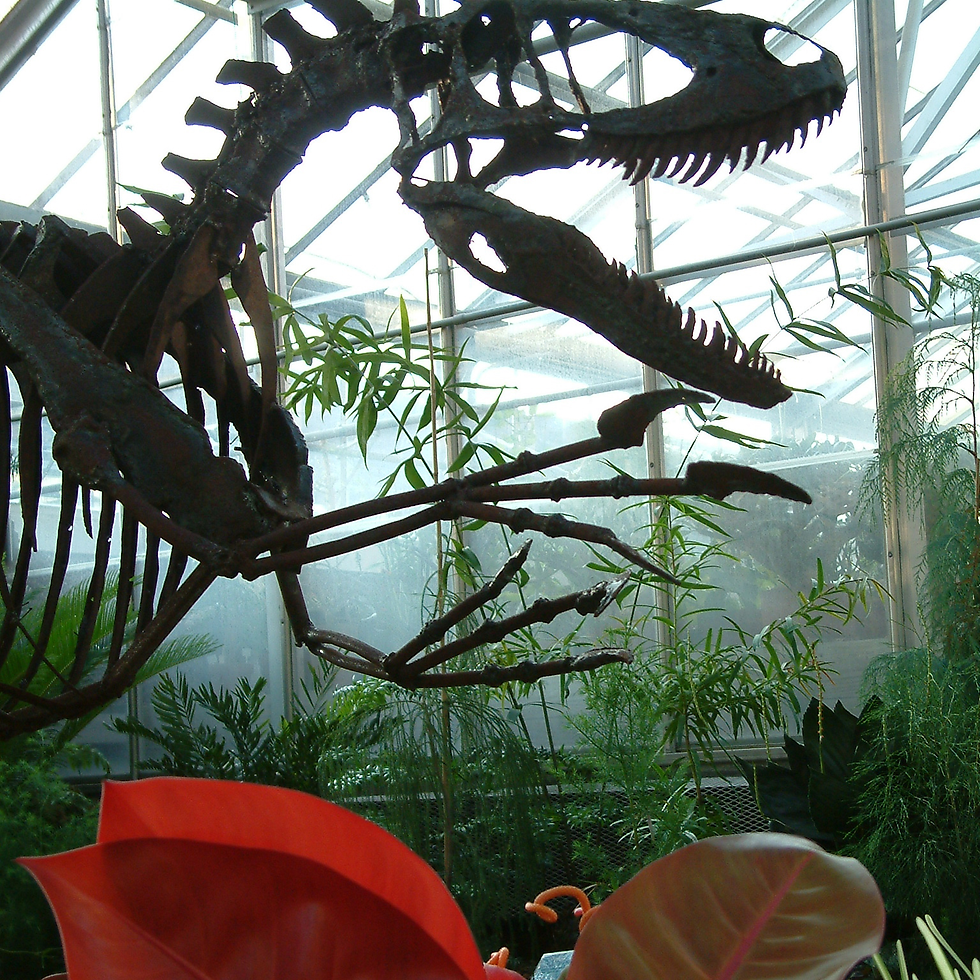The UNCC Botanical Gardens Prove the Importance of Green Space on Campus
- Nick Caceres
- Oct 11, 2024
- 3 min read
By: Nick Caceres
As a University of North Carolina at Charlotte student, one of the most eye-catching areas on the campus is the oasis known as the botanical gardens. Perfectly situated between the bustling main campus on the west side and the dorm buildings on the east side, the gardens serve as an important green space on campus.
Places like this are important to have in institutions of education, as they allow students to have hands-on experience with an overwhelming volume of plants native to the area and beyond.
The botanical gardens at UNC Charlotte have three main sections, the most popular section is the Susie Harwood Garden, which is comprised of a collective of smaller gardens that feature both native and non-native flora that can grow in the temperate Piedmont climate.
One of the gardens is composed of fruit shrubs that can grow in the Piedmont, including Chinese Quince, Ricki Magnolia and Anise Tree. These plants emphasize the ability to cultivate fruit and other growable foods instead of relying on the grocery store. Another feature of the Susie Harwood Garden is the nearly 30 species of Azaleas that become clouds of fragrant flowers in the deciduous understory during spring.
Separated by a gravel path, this garden borders Van Landingham Glen, which serves as the more naturalistic woodland side of the botanical gardens, featuring tons of interconnected trails containing flora like Carolina Rhododendron, Hickory, Swamp White Oak and Redbay.
Finally, across Mary Alexander Road resides the McMillan Greenhouse which houses some of the rarest plants in the region.
Summer is the peak of the native carnivorous Sarracenia hybrids which were originally bred by Dr. Mellichamp, a famous botany professor at the University of North Carolina, in an effort to preserve these beautiful plants. These hybrids can also be purchased for one’s own garden directly from the McMillan Greenhouse, offering a new dimension of interactivity with these plants. A featured plant that is extremely difficult to grow is the Rock Tassel Fern, found in the “dinosaur garden.” These rare clubmoss fern-allies have fossils dating back to the Carboniferous, around 360 million years ago, long before flowers first evolved. Present day, these plants are native to a variety of primary rainforests, monsoon forests, sub-tropical temperate forests and mangrove forests in the old world along the Indian Ocean and Pacific Ocean.
Speaking of Dr. Mellichamp, another more recent extension of the botanical gardens is the Mellichamp Native Terrace which showcases native plants complementing brick hard scaping, meant to simulate home landscape features that have been popular for decades for many front and back yards.
These types of places are not exclusive to The University of North Carolina at Charlotte. Take for example The University of California at Berkeley Botanical Garden that has a special focus on plants from a mediterranean climate or the Harold L. Lyon Arboretum at the University of Hawaii at Manoa, which has over 190 acres of tropical trees and plants with species in the thousands. These highly detailed green spaces offer a therapeutic outlet for students as well as an opportunity to advance in the studies of botany. Green spaces in a broad sense can bring an environmental awareness and greater sense of care through exposure to nature and beauty.
All images courtesy of UNCC Botanical Gardens website.








Comments